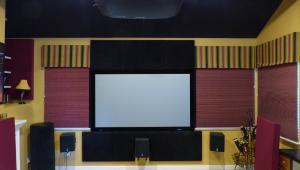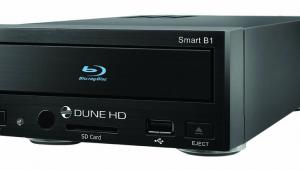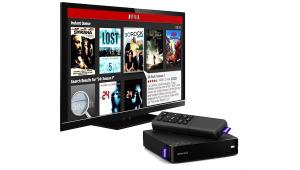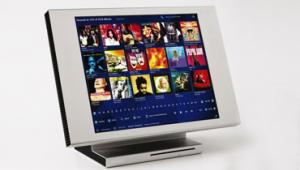Samsung BD-P1000 Blu-ray Disc Player: Features & Hook-up Page 3
The idea here is that the BD-P1000 can somehow benefit from a 1080p TV with a native 1080p input, as opposed to one whose highest input resolution is 1080i, which it deinterlaces to feed its 1080p display. Blu-ray and HD DVD discs are all encoded in 1080p, and Samsung's is the first high-def disc player that can actually deliver a 1080p video output. In theory, this cuts out a couple of steps of video processing, which could perhaps yield a modest picture improvement in some instances. (Film-originated material has a native frame rate of 24 frames per second, and a good, properly functioning deinterlacer should be able to reconstruct 1080p perfectly from a 1080i signal for any source with an original frame rate of 30 fps or lower. Any misstep by the deinterlacer will create at least fleetingly visible artifacts when there is motion between frames, however.)
But Samsung confirms that the BD-P100 doesn't pull 1080p off the disc and send it directly to the output. (We're not sure why, but it may have to do with limitations of some of the player's internal video processing chips.) Besides the necessary frame-rate conversion, from the 24 fps of film to the 60 fps of standard video displays, the BD-P1000 converts the disc's 1080p to 1080i as an interim step, then converts it back to 1080p for output. So to an even greater than normal extent, it should not much matter whether a 1080p display receives a 1080i or a 1080p signal from this player, provided the set has a good deinterlacer. We certainly did not notice any difference between 1080i and 1080p feeds from the BD-P1000 to our 1080p-compliant reference TVs.
SOUND MATTERS
As mentioned earlier, the best way to get audio out of the player is via its HDMI output, which carries sound alongside the video. You can select either uncompressed PCM (pulse-code modulation) or "Bitstream" digital audio, the latter being standard Dolby Digital or DTS. If you select Bitstream on the audio menu and use the HDMI output for audio, it's the same to your receiver as taking the signal off the player's coaxial or optical audio output. But if you have an HDMI A/V receiver that recognizes a multichannel PCM signal and can properly steer it to the receiver's amplifiers, you'll have the option of tapping the uncompressed linear PCM (LPCM) 5.1-channel soundtracks that Sony Pictures has included on its Blu-ray titles.
If your receiver doesn't have an HDMI input that can accept multichannel PCM, you can still listen to LPCM soundtracks via the BD-P1000's 5.1-channel analog outputs, though the player has limited options for bass management compared with a receiver. And in any event, the Dolby Digital tracks sounded very good; on some Sony discs, they could even be better than the Dolby Digital track issued on the regular DVD. Sony encodes DD tracks on Blu-ray at a data rate of either 448 or 640 kilobits per second (kbps) which, depending on the title, may be a higher bit than the original, they told us. (On regular DVD, 5.1-channel Dolby Digital must be encoded at 384 or 448 kbps.) I tried the Dolby Digital soundtracks from both the HDMI output and the optical output and, as one would expect, heard no obvious differences between the two ports.
Read Rob Sabin's Take on the Samsung BD-P1000 Second Opinion: Blu's Clues Back to Homepage What's New on S&V





























































